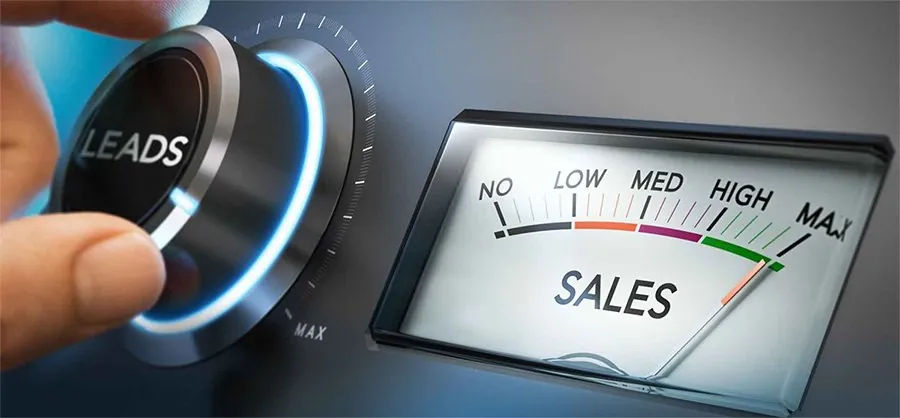4 Best Practices for Maximizing Your Lead Conversion Rates Early in the Process

One of the roughest sales realities is that the majority of your leads won’t pan out. The causes are seemingly endless: the timing isn’t right, something goes amiss with the qualification process, a decision maker vetoes the purchase, the customer gets cold feet, changes happen in the marketplace or at the target company, and sometimes you just simply get beat out. But there’s ways you can improve your lead to revenue rates, and much of the magic happens in the early stages of the selling process – or even before.
- Accept that a significant percentage of your leads won’t convert to revenue.
This may seem counterintuitive, but like every paradox, it holds truth. The reason why you need to consciously acknowledge this truth that you already know is because it will eliminate the tendency to spend time on leads that will never go anywhere. Instead, you’ll channel your efforts to the leads that are legitimately promising, where your chances of closing are much higher (or at the very least, higher than 0).
- Implement a ranking or tier system for your prospects.
There’s an infinite amount of ways to do this, but the exact optimal algorithm and weighting will depend on your company, industry, target markets and customer profiles, etc. It’s also a system that can be devised and plugged into many CRMs or marketing automation solutions. Analytically ranking your leads will present a clear picture of your best targets and subsequently allow you to create an actionable strategy of who to court. Note: some companies may factor deal size into the equation for desirable leads, which can affect which ones you prioritize. But what we’re talking about here is coming up with a probability formula that establishes rankings or tiers of likelihood of conversion.
- Don’t keep asking if the prospect is ready to talk a possible sale.
Sometimes sales reps operate under the misguided notion that nurturing leads takes the form of asking the prospect every few months if they’re ready to explore buying options. That’s precisely the worst way to go about it. What happens in the prospect’s mind is that you a pest. Examples of this nuisance: The little kid who asks repeatedly on a long road trip, “Are we there yet?” and the guy who keeps asking a girl out on a date when she’s declined. Don’t be that kid or that guy. Along the same lines, give some thought before employing a breakup email. It can be an effective strategy if executed well, but is also quickly becoming a stale tactic and will eventually give way to some new innovation. The key here is knowing the best practices for your vertical and the particular buyer persona you’re dealing with (as much as you can determine from your research).
- Adopt a long-term strategy focused on future opportunities.
When looking at your leads and your rankings, bear in mind that it’s not about who is closest to closing, which is the trap that quota-sensitive sales reps fall into. It’s about who seems most likely at some point, whether in the short-term or some months or years down the road, to sign on. It’s a very subtle distinction, but failure to recognize it will cost you a considerable amount of opportunities and revenue. As we’ve written in a previous blog, it’s important to get in early in the buyer’s cycle, and sometimes that means even before the buyer is even thinking about possibly becoming a buyer. “Why would I do that? There’s nothing to sell them then,” you might say. Which is precisely our point. With no pressure on either side to get them to look at your offerings, this ur-stage is the optimal time to build up a relationship and trust, using some of the methods we’ve discussed elsewhere. That way, when the prospect *is* ready to buy, you’ve already laid the groundwork of becoming a Trusted Advisor and are far in front of everyone else, who is just now showing up.
Trying to increase the conversion rate from lead to sale is one of the ultimate, most difficult quests for a sales rep. It’s often a long, arduous process that can go sideways at multiple points. But by concentrating your efforts on the best chance opportunities, both in the near future and in the temporal distance and becoming customer-centered, you can net more sales and make the most efficient use of your resources.

- Account Planning (11)
- Awards (49)
- Client Testimonial (37)
- Personal Branding (19)
- Podcast (11)
- Research (70)
- Sales Career Development (87)
- Sales Coaching (156)
- Sales Consulting (137)
- Sales Culture (170)
- Sales Enablement (354)
- Sales Leadership (109)
- Sales Management (248)
- Sales Negotiation (16)
- Sales Prospecting (125)
- Sales Role-Playing (18)
- Sales Training (235)
- Selling Strategies (263)
- Soft Skills (70)
- Talent Management (94)
- Trusted Advisor (27)
- Virtual Selling (49)
- Webinar (9)


























